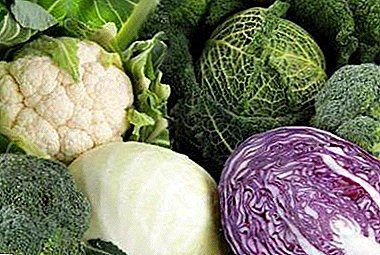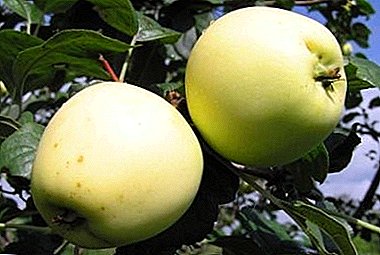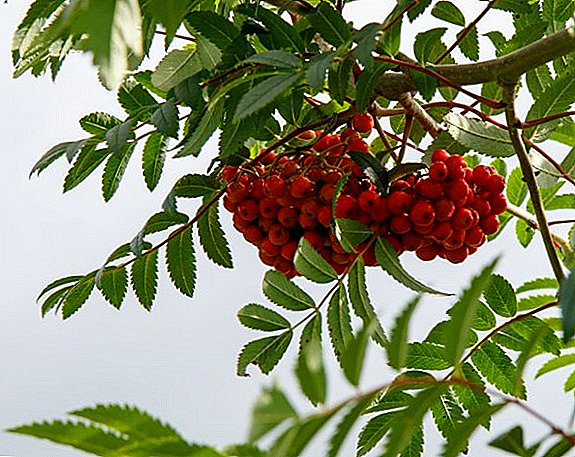
The traditional dish of Russian cuisine is borscht. And its preparation is impossible to imagine without a head of fresh crispy white cabbage. This vegetable is well known and loved by many.
However, not everyone knows that cabbage has a wide species diversity, and there are a great number of options for its use and methods of preparation.
Interesting? Read on, because we will devote this article to acquaintance with the chemical and vitamin composition of cabbage, as well as the beneficial properties of different species of this plant.
Why is it important to know the chemical composition and CBDS?
Cabbage or Brassica in Latin is a very common and popular product.
You can easily meet her in any salad or at the dinner table. Therefore, it is necessary to know how this vegetable affects the human body. Start with the fact that representatives of the cabbage family contain an incredible amount of macro-and micronutrients, vitamins and acids. Because of this, its systematic use can both improve and ruin human health.
For example, for people with pancreatic problems, excessive cabbage is contraindicated. Therefore, below you can find answers to such important questions about the caloric content and composition of the product: what vitamins (these are, for example, C, B, E and others) are rich in fresh cabbage of different types, how many calories (kcal) contain 100 grams of cabbage, as well as proteins , fats and carbohydrates, what minerals are in this vegetable?
Content of substances in various types
Scientists distinguish about 50 species of representatives of the Brassicaceae family, while breeders use about 13 species. Some of them will be discussed below.
White-headed

Contains such vitamins per 100 g:
- Vitamin complex of group B1-9 - 0.38 mg.
- Beta-carotene - 0.02 mg.
- C - 45 mg.
- PP - 0.7 mg.
- K - phylloquinone - 76 mg.
- Choline - 10.7 mg.
In addition, this product contains 90.4 g of water, 4.6 g of mono- and disaccharide, and 0.3 g of organic acids.
Trace elements per 100 g:
- Zinc - 0.4 mg.
- Iron - 0.6 mg.
- Boron - 200 mcg.
- Aluminum - 570 mcg.
- Manganese - 0.17 mg.
Macro elements per 100 g:
- Chlorine - 37 mg.
- Potassium - 0.3 g
- Magnesium - 16 mg.
- Phosphorus - 31 mg.
- Calcium - 48 mg.
Benefit: Organic acids, which are rich in cabbage, prevent the development of malignant tumors. High content of various vitamins supports immunity. And folic acid is considered a useful female vitamin. Tartronic acid with choline prevent the formation of cholesterol, stabilize the acidity of the stomach. And it should be noted the content of glucose, which in not excessive quantities is extremely useful for the productive work of the body and the brain in particular.
Harm: overeating white cabbage can provoke excessive gas formation in the stomach and overload the pancreas with dense dietary fibers. When stomach ulcers also do not eat cabbage. Proteins are contraindicated and potency problems.
We offer to watch a video about the composition, benefits and dangers of white cabbage:
Red Knot

Vitamin composition per 100 g:
- A - 12 mg.
- PP - 0, 6 mg.
- Vitamin C - 90 mg.
- E - 0, 13 mg.
- K - 0.149 g.
- AT1, 2, 5, 6, 9 - 0.7 mg.
The calorie content of the fresh product is 26 kcal per 100 grams.
Red cabbage - is that - carbohydrates or proteins? BUD cabbage: Fat - 0.2 g, Protein - 1.2 g, and Carbohydrate - 5.1 g and 91 g of Water.
Macro elements per 100 g:
- Potassium - 0.3 g
- Silicon - 28 mg.
- Sulfur - 70 mg.
- Calcium - 48 mg.
- Phosphorus - 37 mg.
Trace elements per 100 g:
- Manganese - 200 mcg.
- Copper - 36 micrograms.
- Iron - 0.5 mg.
- Zinc - 23 micrograms.
Benefit: Red cabbage has antibacterial and diuretic effects. Normalizes acid balance and blood pressure. Acids in it do not allow cholesterol to form; they clean vessels and blood. And an impressive stock of microelements and vitamins strengthens the immune system, the nervous system, improves eyesight and restores the intestinal microflora.
Harm: Red cabbage should not be used by people with acute problems of the gastrointestinal tract. Also, you should not eat her mothers with breastfeeding and children up to one year old, this can provoke the appearance of problems with the child's stomach.
We offer to watch a video about the benefits of red cabbage and its medicinal properties:
Colored

Vitamin composition per 100 g:
- C - 48 mg.
- E - 0, 08 mg.
- K - 16 mcg.
- AT1, 2, 4, 5, 6, 9 - 46 mg.
- PP - 0.5 mg.
Caloric value of the product per 100 grams - 25 calories. Proteins - 2 g, Fat - 0.3 g, Carbohydrates - 5 g, Water - 92 g
Then you can get acquainted with the chemical. the composition of the cabbage.
Macro elements per 100 g:
- Calcium - 22 mg.
- Phosphorus - 44 mg.
- Potassium - 230 mg.
- Sodium - 30 mg.
- Magnesium - 15 mg.
Trace elements per 100 g:
- Copper - 40 micrograms.
- Manganese - 0.155 mg.
- Iron - 0.4 mg.
Benefit: Cauliflower (or Brassica oleracea in Latin) is very useful in ulcers and diseases of the gastrointestinal tract, its juice has wound-healing properties, and trace elements stabilize the acid balance of the stomach. Also, the heads of this species contain a lot of fiber, which perfectly cleans the digestive tract. In addition, the components of this vegetable perfectly strengthen the cardiovascular system. Cauliflower is an excellent dietary product.
Harm: Increased secretion of gastric juice is a serious contraindication to the use of Brassica oleracea. People with problems of the urogenital system, diseases of the stomach and intestines also have it undesirable.
We offer to watch a video about the benefits of cauliflower for the body:
Broccoli

What are the vitamins found in broccoli?
Vitamin composition per 100 g:
- PP - 0.64 mg.
- AT1, 2, 5, 6, 9 - 0.98 mg.
- A - 0.380 mg.
- C - 90 mg.
- E - 0.8 mg.
The caloric content of 100 grams of broccoli is 33 kcal, and the BJU content of fresh vegetable: Proteins - 2.8 g, Fat - 0.33 g, Carbohydrates - 6.7 g and Water - 88 g.
Trace elements per 100 g:
- Iron - 0.75 g.
- Zinc - 0.43 g.
- Selenium - 2.5 mg.
Macronutrients in composition and by how many mg:
- Calcium - 46 mg.
- Magnesium - 21 mg.
- Sodium - 32 mg.
- Potassium - 0.315 g.
- Phosphorus - 65 mg.
Benefit: Broccoli is quite a nourishing and dietary product, in addition, the use of broccoli in food has a positive effect on digestion.
Due to its richness in vitamins, broccoli is an extremely useful organic product. Also, broccoli is well absorbed by the body.
Harm: People with pancreatic diseases and high acidity should not eat broccoli. You should not over-boil the vegetable, guanine and adenine harm your body because of this treatment.
We offer to watch a video about the dangers and benefits of broccoli:
Beijing

The following describes what vitamins contains Chinese cabbage and how many mg each.
Vitamin composition in 100 g:
- And - 16 mkg.
- Beta-Carotene - 0.2 mg.
- AT1, 2, 4, 5, 6, 9 - 8.1 mg.
- C - 27 mg.
Caloric content of Peking cabbage per 100 g - 16 kcal. Proteins - 1.2 g, Fat -0.2 g, Carbohydrates - 2 g, Water 94 g.
The product contains trace elements:
- Potassium - 0.237 g.
- Calcium - 74 mg.
- Manganese - 2 mg.
Macro elements:
- Magnesium - 14 mg.
- Sodium - 9 mg.
- Phosphorus - 29 mg.
Benefit: Peking cabbage is useful in the fight against migraines and neuroses, it calms and stabilizes the nervous system.
It is recommended to use this type of cabbage for people with diabetes, hypertension, gastritis with low acidity or high cholesterol. It prevents the occurrence of beriberi and cardiovascular diseases.
Harm: This vegetable is contraindicated for people with pancreatitis, high acidity, gastric bleeding or exacerbation of ulcers and gastritis. Beijing cabbage contains large amounts of citric acid.
We offer to watch a video about the benefits of Peking cabbage:
Based on the data presented, it is safe to say that cabbage is a vegetable saturated with acids, potassium and vitamin C. Some representatives of the Cruciferous family have a much larger supply of vitamin C than citrus fruits. Even supporters of the diet can enrich your cabbage diet. Not to mention that such a simple, popular and affordable vegetable - can significantly contribute to improving your health. However, this useful product should be used carefully.












